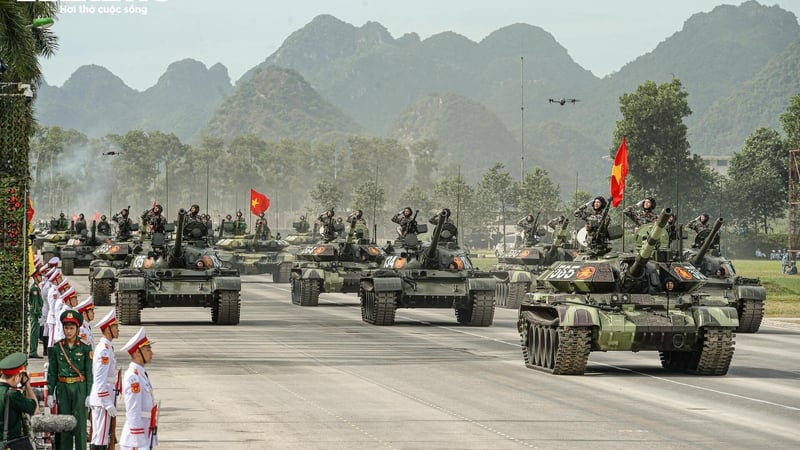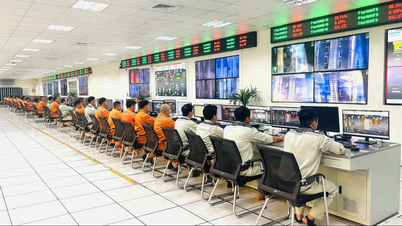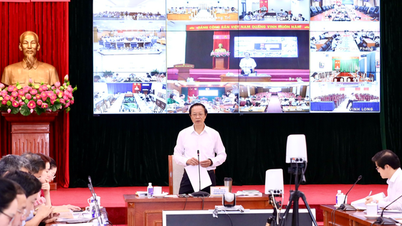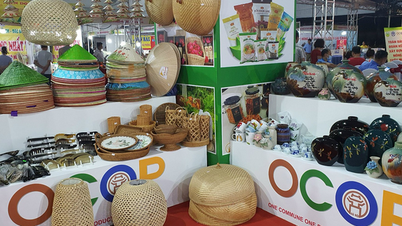The yuan exchange rate against the USD fell to an all-time low on the morning of April 9 as the US’s massive 104% tariff on Chinese goods was about to take effect. At the same time, the USD exchange rate also fell sharply due to the increased risk of a US economic recession.
According to Reuters, US President Donald Trump has shown no signs of backing down from his plan to impose an additional 50% tariff on Chinese goods. If the plan is maintained, the tariff will take effect at 0:00 on April 9, US time. This is the tariff that Mr. Trump proposed after China imposed a 34% tariff on US goods in retaliation for the 34% reciprocal tariff that the US imposed on Chinese goods.
Since taking office, Mr. Trump has twice imposed an additional 10% tariff on Chinese goods, plus a 34% reciprocal tariff. If the 50% tariff mentioned above is included, the total tariff that Mr. Trump will impose on Chinese goods during his second term will be 104%.
Sell USD and RMB, buy Japanese Yen and Swiss Franc
“If such tariffs are implemented, there is no hope that the US economy can avoid recession,” Chris Weston, head of research at Pepperstone, told Reuters, explaining why the US dollar is also losing strength against other major currencies.
At nearly 11:00 a.m. today, Vietnam time, the Dollar Index, which measures the strength of the USD against a basket of currencies including the euro, British pound, Swedish krona, Canadian dollar, Japanese yen and Swiss franc, fell more than 0.5%, to below 102.4 points.
Despite the depreciation against the aforementioned currencies, the USD/CNY exchange rate reached an all-time high in the offshore market, with 7.4288 yuan to 1 USD. Investors are waiting to see what level the People's Bank of China (PBOC) will announce the reference rate on April 9 to assess Beijing's stance.
On April 8, China eased control over the yuan exchange rate by lowering the daily reference rate below the key level of 7.2 yuan per dollar. The PBOC set the reference rate on April 8 at 7.2038 yuan per dollar, the lowest level since September 2023.
While both the US dollar and the yuan have lost value due to the trade war, currencies considered to be safe havens, including the Japanese yen and the Swiss franc, have both appreciated sharply.
"Our top FX strategy now is bullish on the yen, given the risk of stagflation in the US due to Trump's reciprocal tariffs and tit-for-tat moves by trading partners escalating tensions, as well as a sell-off in equity markets," a Nomura report quoted by Bloomberg news agency.
“In addition to the relative safety of the yen, Japan’s macroeconomic situation remains strong and interest rate differentials are expected to continue to develop in the yen’s favor,” the report said.
The dollar fell 0.7 percent against the yen to 145.23 yen, near a six-month low of 144.55 yen. The yen also gained against a range of higher-yielding currencies as investors pulled out of yen-based carry trades.
Against the Swiss franc, the dollar hit a six-month low of 0.8430 francs per dollar, facing the possibility of breaking the support level of 0.8374 francs per dollar.
The euro also rose against the dollar, helped by news that the conservative CDU/CSU coalition had reached a coalition agreement with the center-left Social Democrats (SPD) to form a government. The development helped ease earlier political concerns in Europe’s largest economy. The euro rose 0.4% against the dollar to $1.0996 per euro.
China's dilemma
As for the yuan, allowing it to depreciate is an option for Beijing to support exports, which are the growth engine of the world’s second-largest economy but are also facing significant pressure from trade tensions. However, allowing the yuan to depreciate sharply would come with significant risks, as it would increase bearish bets on the economy, trigger capital outflows, further strain relations with the United States and reduce the chances of any trade talks.
On the other hand, if the yuan is kept strong, China will face a disadvantage in exports, putting pressure on its already weak economic growth. Moreover, resisting devaluation pressure for a long time will eventually lead to a sharp depreciation of the currency, which could increase volatility in financial markets.
"China will likely allow the yuan to depreciate in a controlled manner rather than keeping it from falling past 7.35 yuan per dollar. China will allow the exchange rate to fluctuate more flexibly as a tool to relieve pressure on growth amid rising tariffs," said Becky Liu, head of strategy at Standard Chartered Bank.
The possibility of China adjusting its exchange rate strategy has been closely watched by traders since Trump took office for a second term, but Chinese officials have repeatedly pledged to keep the exchange rate stable and prevent any sharp swings. Investors are now waiting for fresh signals from the PBOC to determine Beijing’s exchange rate stance and whether China will continue to ease monetary policy.
Many analysts predict that the yuan could depreciate further in the near future.
Wells Fargo sees the PBOC allowing the yuan to depreciate by 15% over a two-month period. There is a 75% chance that Beijing will devalue the yuan, and if the PBOC does so, it will “go big, possibly allowing the yuan to depreciate by 20-30%,” according to Jefferies chief strategist Brad Bechtel.
However, most experts believe the yuan will depreciate less, as a sharp devaluation would accelerate capital outflows and erode investor confidence in Chinese assets. Even if pessimism takes root, the PBOC has the tools to dampen volatility. In the past, it has deployed tools such as adjusting foreign exchange liquidity and issuing treasury bills in the offshore market to prevent the currency from sliding.
(According to VnEconomy)
Source: https://baoyenbai.com.vn/12/348483/Ty-gia-nhan-dan-te-thap-ky-luc-truoc-gio-G-thue-quan-USD-cung-truot-doc.aspx


































































































Comment (0)